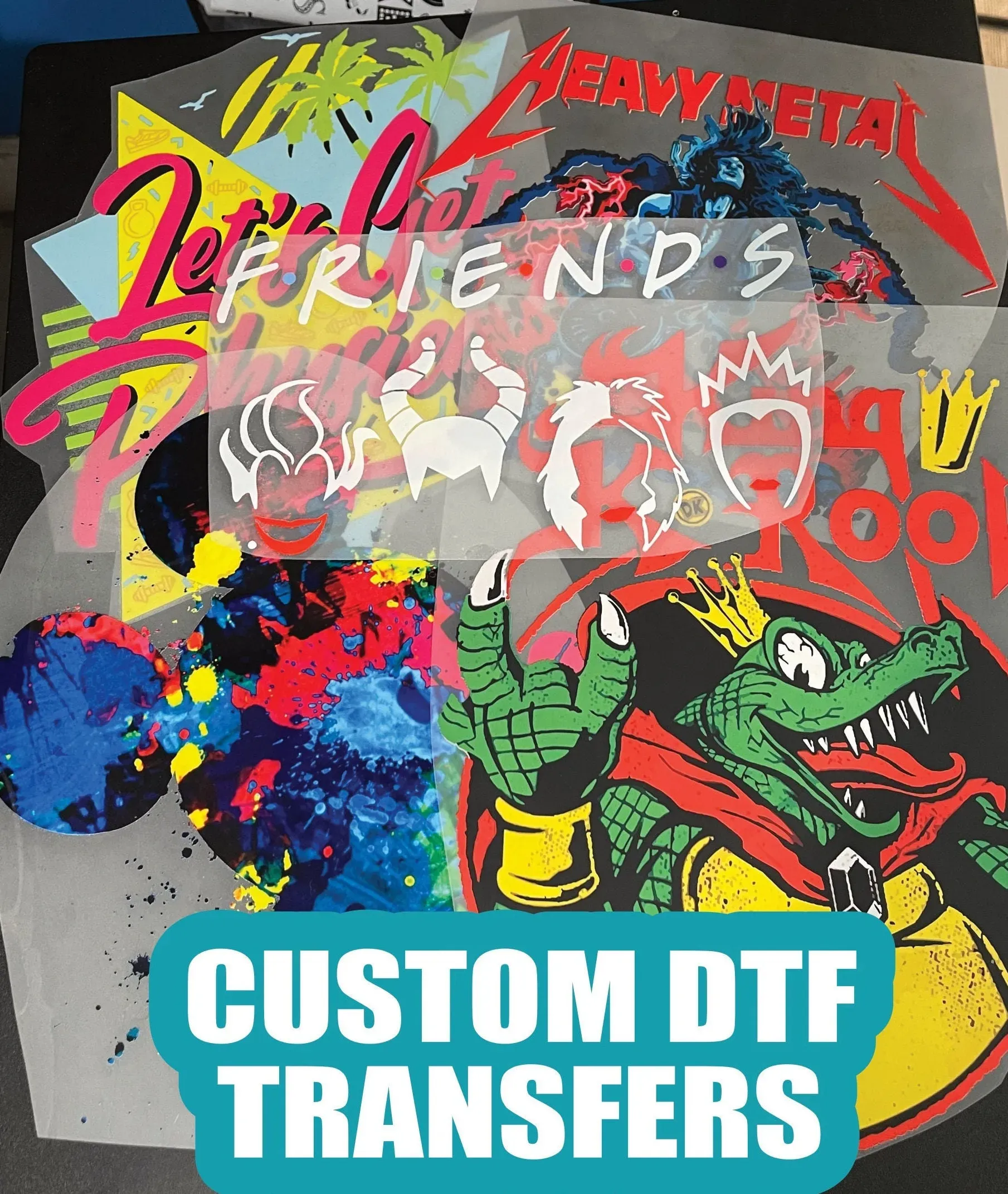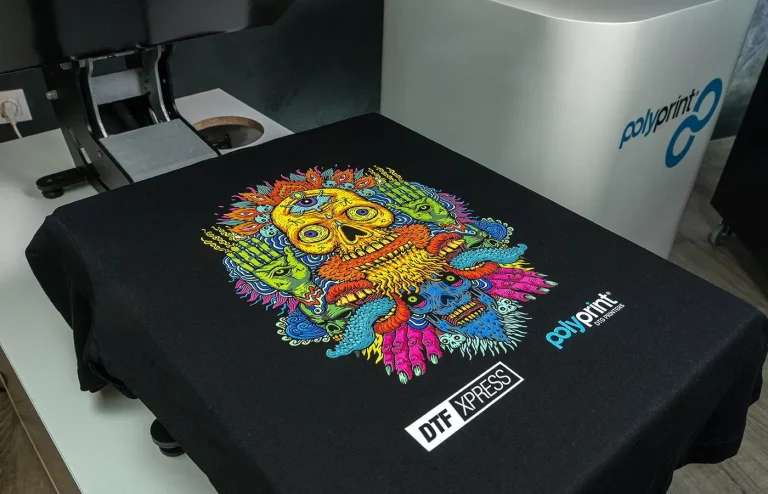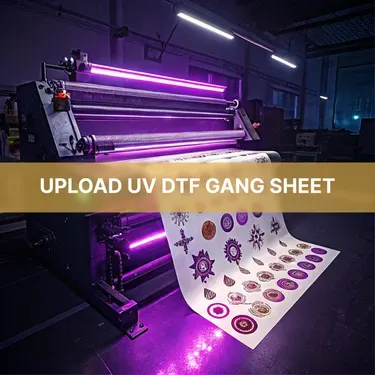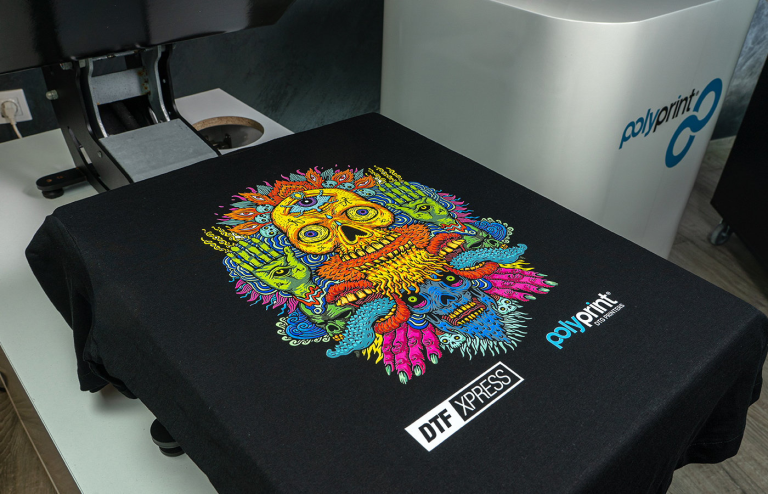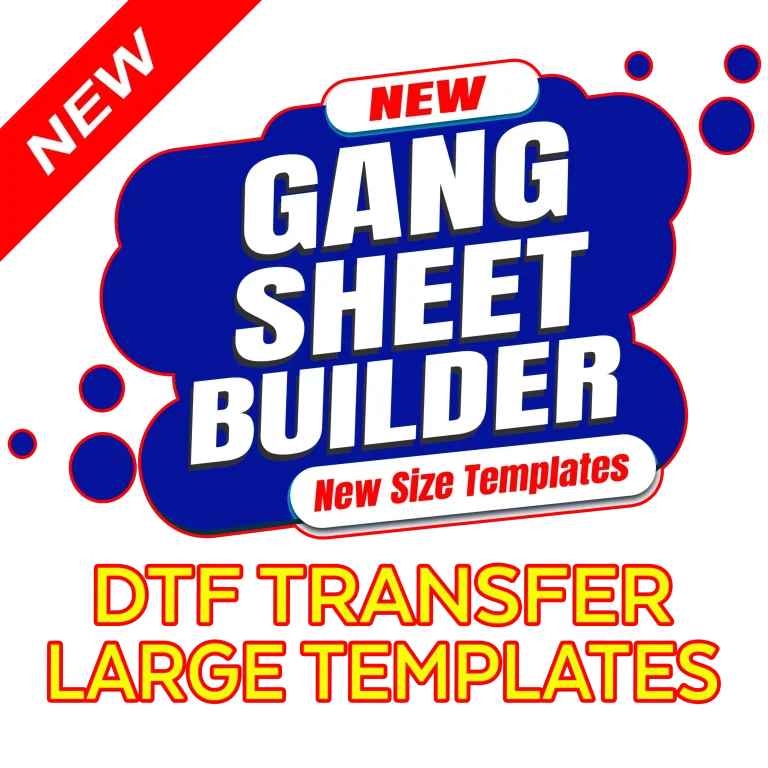DTF Transfers: The Complete Guide for Beginners and Pros
DTF transfers, or Direct to Film transfers, have transformed the landscape of textile printing with their innovative approach that fuses quality and versatility. This cutting-edge DTF printing technique utilizes specialized equipment to produce vibrant designs on a variety of fabric types, revolutionizing how businesses and individuals create custom apparel. Through the DTF transfer process, designs are printed on unique film and then seamlessly applied to garments using heat and pressure, delivering impressive results. Compared to traditional methods, DTF offers distinct advantages such as quicker application times and superior detail, making it an attractive choice for small business owners and DIY enthusiasts alike. With a growing emphasis on sustainable DTF printing practices, this method highlights the balance between creativity and environmental responsibility in the modern marketplace.
The world of custom textile printing is rapidly evolving, and one technique that stands out is the printing directly onto specialized films for subsequent application onto fabrics. This innovative method, often referred to as film transfers, has gained traction among those looking to produce high-quality and durable prints across various materials. With advancements in the equipment used, including inkjet printers designated for this purpose, the direct-to-film method is increasingly celebrated for its cost efficiency and flexibility. Additionally, eco-friendly printing solutions are becoming a pivotal aspect of this process, appealing to both creative professionals and environmentally conscious consumers. As we delve into the details of this unique printing approach, we will uncover the numerous benefits and applications that make it a game-changer in the industry.
Understanding the Basics of DTF Printing
DTF printing, or Direct to Film printing, is revolutionizing the way designs are transferred onto fabrics, merging advanced technology with creative expression. In this process, a specialized DTF printer utilizes water-based inks to produce high-resolution designs on a unique transfer film. This method allows for a multitude of colors and intricate details that are often unattainable with traditional methods like screen printing. The ultimate result is a vibrant, durable print that adheres easily to various fabric types, from cotton to polyester, enhancing the versatility of apparel production.
Understanding DTF transfers goes beyond just the printing technique. It encompasses the entire process, which begins with design creation using graphic software, continues with printing on film, and culminates in the heat transfer to fabric. This comprehensive knowledge empowers businesses and hobbyists to take full advantage of the benefits DTF printing offers, from faster production times to cost-effective solutions. As more individuals recognize the significance of DTF transfers, the awareness and demand for this innovative printing method continue to grow.
Key Benefits of DTF Transfers for Small Businesses
For small businesses entering the textile market, DTF transfers present a compelling solution due to their cost-effectiveness and efficiency. Unlike traditional printing methods, DTF printing allows entrepreneurs to produce customized designs quickly without a large upfront investment in equipment or materials. This accessibility enables budding entrepreneurs to cater to niche markets effectively, offering personalized products that resonate with their target audiences. The minimal setup required also means that small business owners can pivot quickly, experimenting with different designs and products without incurring significant costs.
Moreover, DTF transfers are particularly well-suited for limited-run items or one-off customizations, making them ideal for small businesses that thrive on unique offerings. This flexibility opens up avenues for more creative ventures, allowing businesses to tap into trends and consumer preferences dynamically. By leveraging the benefits of DTF transfers, small business owners can enhance their product lines, increase their production capabilities, and address customer demands efficiently.
Essential Equipment for DTF Printing Success
To embark on DTF printing, investing in the right equipment is paramount for achieving high-quality results. The primary component is a DTF printer, which is specifically designed to handle the unique requirements of printing on transfer films. Additionally, the choice of DTF inks plays a crucial role—these water-based inks not only produce vibrant colors but also ensure excellent adherence to fabrics post-transfer. Accompanying this, a reliable heat press is essential for effectively transferring designs onto materials, as the process requires precise temperature control and consistent pressure.
Furthermore, incorporating quality DTF transfer film and adhesive powders enhances the final product’s durability and clarity. As the DTF technology evolves, newer models of printers and heat presses are emerging, equipped with enhanced features that improve overall output quality and production efficiency. Business owners should stay informed about advancements in DTF equipment to optimize their setups for superior fabric printing results.
The DTF Transfer Process Explained
Understanding the DTF transfer process requires a step-by-step approach to ensure successful results. Initially, designers create digital graphics that are formatted for printing on DTF transfer film. Once the design is ready, it’s printed using a DTF printer, where the printed film is coated with adhesive powder while still wet. This adhesive binds the colors firmly to the fabric once heat is applied. An important aspect of this process is curing, where the film undergoes a short heating stage to activate the adhesive before the final transfer.
After preparing the film, the transfer to fabric is conducted with a heat press machine, which securely fuses the design to the material. This method is distinguished by its precision and ease of application, taking less time than traditional printing methods. Continuous improvements in curing techniques and heat press technology have made DTF transfers even more efficient, enabling users to achieve optimal results while reducing energy consumption. This not only enhances print quality but also streamlines the production workflow.
Eco-Friendly Practices in DTF Printing
As businesses grow increasingly conscious of environmental impacts, sustainable DTF printing practices are gaining importance. Manufacturers are innovating constantly, producing eco-friendly materials such as biodegradable inks and recyclable transfer films that significantly reduce waste. By adopting these green alternatives, businesses can appeal to a growing market segment that prioritizes sustainability in their purchasing decisions, allowing eco-conscious consumers to support brands that align with their values.
In addition, the DTF printing industry is focusing on reducing energy consumption throughout the printing process. This includes utilizing more efficient printing equipment and optimizing the throughput time for each transfer. As sustainability becomes a guiding principle in the textile industry, companies involved in DTF printing are positioned to lead the way by implementing practices that not only benefit the environment but also showcase their commitment to sustainable development.
Future Trends in DTF Transfers
The future of DTF transfers looks bright, as rapid advancements in technology continue to reshape the landscape of textile printing. Innovations such as enhanced ink formulations and the integration of AI-driven design software are streamlining the creation and application of prints, making DTF printing even more user-friendly. These improvements not only increase efficiency but also expand the creative horizons for designers and businesses alike, leading to the emergence of more complex and eye-catching designs that attract consumer attention.
Furthermore, the competitive pricing of DTF printers and supplies makes it increasingly feasible for small businesses to capitalize on market opportunities without substantial financial risk. As awareness of DTF printing grows, we can expect an uptick in niche markets catering to specific consumer needs, ranging from personalized apparel to promotional items for brands. As this printing technology matures, it is set to redefine consumer expectations in quality, speed, and sustainability within the textile industry.
Frequently Asked Questions
What are DTF transfers and how do they work?
DTF transfers, or Direct to Film transfers, involve printing intricate designs onto a special film using a DTF printer. The process entails applying heat and pressure to transfer the design onto various fabric materials. This method is known for producing vibrant and durable prints that are ideal for customization in the textile printing industry.
What equipment is needed for DTF printing?
To successfully perform DTF printing, you’ll need essential equipment including a DTF printer for high-quality images, DTF inks for vibrant colors, a heat press for transferring designs, DTF transfer film for printing, and adhesive powders to ensure the design bonds well with the fabric. These components are critical for achieving optimal results in the DTF transfer process.
What is the DTF transfer process?
The DTF transfer process consists of several key steps: first, prepare your digital design, then print it onto DTF transfer film. After this, sprinkle adhesive powder onto the wet print, cure it with heat, and finally transfer the image to the fabric using a heat press. Each step is essential for ensuring that your final product maintains quality and durability.
Is sustainable DTF printing possible?
Yes, sustainable DTF printing is achievable through the use of eco-friendly materials like biodegradable inks and recyclable transfer films. Many manufacturers are now producing these sustainable options to meet growing consumer demands for environmentally conscious practices within the textile printing industry.
What are the benefits of using DTF transfers over other printing methods?
DTF transfers offer several advantages over traditional methods like screen printing and DTG. Key benefits include high versatility, the ability to print on a wide range of fabrics, lower costs for small businesses, and faster production times. These factors contribute to DTF printing’s popularity among DIY enthusiasts and small business owners.
How can I start a business using DTF printing?
Starting a business using DTF printing involves acquiring the necessary DTF equipment, such as a quality DTF printer and heat press. Begin by learning the DTF transfer process and honing your design skills. Focus on creating unique product offerings that appeal to your target market, and be mindful of sustainable practices to differentiate your brand in the textile printing industry.
| Key Point | Details |
|---|---|
| What are DTF Transfers? | DTF transfers involve printing designs on a special film and transferring them to fabric using heat and pressure, resulting in vibrant and durable prints. |
| Advantages of DTF Printing | DTF is versatile, cost-effective, and allows for high-quality detailed prints, making it appealing for small businesses and DIY enthusiasts. |
| Equipment Needed | Essential items include a DTF printer, DTF inks, heat press, DTF transfer film, and adhesive powders for successful printing. |
| DTF Transfer Process | The process involves design preparation, printing on DTF film, applying adhesive, curing, and transferring the design to fabric. |
| Cost and Accessibility | DTF printing has become more affordable, with reasonable prices for printers and materials, making it accessible for newcomers. |
| Sustainability Considerations | DTF printing is increasingly adopting eco-friendly practices, with biodegradable inks and recyclable materials becoming more prevalent. |
Summary
DTF Transfers are revolutionizing the textile printing industry by combining versatility, accessibility, and quality in custom printing solutions. With the ability to produce high-quality prints quickly and affordably, DTF transfers cater to the needs of both small business owners and DIY enthusiasts alike. As awareness of sustainable practices grows, the adoption of eco-friendly materials in DTF printing not only attracts environmentally conscious consumers but also sets a standard for future practices in the industry. This innovative printing method opens up a world of creative possibilities while ensuring affordability and sustainability, making DTF transfers a smart choice for anyone venturing into custom textile printing.

